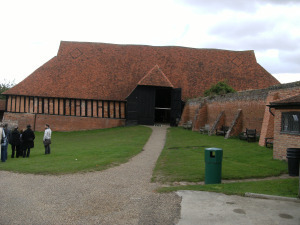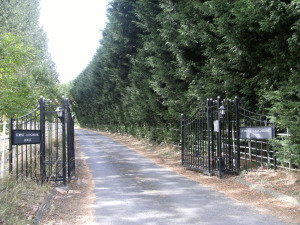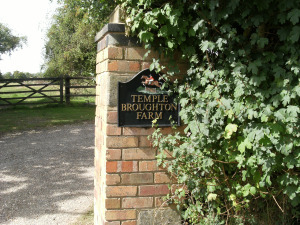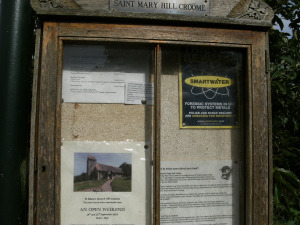Helen J. Nicholson's Blog, page 12
January 14, 2014
Knights Templars estates funding bid: latest
The sad news is that my application for funding for this project has been rejected. So that at least some of the work can be made generally available, I’m putting the draft transcriptions I’ve done so far on to Wattpad, where anyone can look at them. They are the records for Llanmadoc (South Wales); Temple on Bodmin Moor in Cornwall; Temple Meads in Bristol; Castle Mills at York and Temple Sowerby (Westmorland, now in Cumbria).


November 18, 2013
Knights Templar Estates project funding bid: update
My PI (principal investigator) response has just been submitted. Now I and the would-be project team wait and hope.


November 16, 2013
Knights Templar estates project funding bid: current status
The referees’ reports on my application for funding for the ‘Knights Templars estates in England and Wales’ project. I have until Monday 18 November to respond. I’ve produced a draft response with help from colleagues and the project team, and we’re considering it over the weekend. The plan is to upload the final version to the application website on Monday.


November 6, 2013
Crusaders
This post deals with another very common question in my email bag: ‘My family is descended from crusaders.’ The enquirer then gives a family name and asks me to tell them more about their crusading ancestor(s).
Usually, I can’t. The person they are asking about was not from a sufficiently noble family to get noticed by the contemporary commentators. However, there are things that can be done to try and find information.
For all medieval name enquiries, a good place to start is to look the name up in the Oxford Dictionary of National Biography online. UK readers who are members of a council library may have free access to this through their local library service. Another great collection of material is the Victoria County History. This is still ongoing work, but many of the older volumes are available online through British History Online. Of course it helps to know which county to look at. Another good source of information is The National Archives search.
These won’t necessarily verify that the person went on crusade, but may find some family members of the required name. But how can we find out whether they went on crusade?
As many readers of this blog will know, there were no complete lists of participants on the crusades throughout most of the 12th and 13th centuries, and even when they became more organised the lists only gave the names of the leaders and significant participants (e.g. people on horseback who could be entitled to have the cost of their horse reimbursed if it was killed), so it can be very difficult to discover whether or not a certain individual went on crusade. Some surviving documents ecord loans taken out by would-be crusaders before they set out, or sales of property that they made in order to raise money. Sometimes the contemporary commentators who recorded events mentioned individuals, but the majority went unrecorded.
Crusade scholars reading this blog will already know that there are a lot of contemporary medieval accounts of the crusades, and wading through them looking for a name that contemporaries spelled in three different ways can be frustrating. Fortunately there are now many good translations of crusade chronicles, many of them published by Ashgate Publishing in their series Crusade Texts in Translation. There are also volumes published by Boydell and Brewer, such as The History of the Holy War: Ambroise’s Estoire de la guerre sainte, ed. Marianne Ailes and Malcolm Barber with a translation by Marianne Ailes (Woodbridge: Suffolk, 2003). Some of the longer medieval chronicles have no modern translation, but 19th-century translators may have translated them: for example, Roger of Howden’s chronicle, translated as The annals of Roger de Hoveden and published by Henry Bohn of London in 1853, has been republished at Felinfach by Llanerch Publishers in 1997.
Some modern scholars have put together lists of crusaders. Simon Lloyd compiled a list of the crusaders who went to the East with the Lord Edward (later King Edward I) in 1270-2 (published in English Society and the Crusade, 1216-1307 (Oxford: Clarendon Press, 1988), appendix 4). For the fourteenth century, Timothy Guard has recently published a detailed study, Chivalry, Kingship and Crusade: The English Experience in the Fourteenth Century (Woodbridge, Suffolk: Boydell, 2013), which includes at the end a list of all the fourteenth-century English crusaders he found during his research.
But even when you have looked in all these places, it may still be impossible to find the required names. We can go through the Calendars of the Patent Rolls, Close Rolls, Charter Rolls, etc. (now available in electronic format as well as in book form but not usually available in public libraries, alas); we can go through published collections of royal charters, monastic charters, baronial charters; local archives may have documents from local families, although many don’t go back to the middle ages. Sometimes it isn’t possible to find a name even with all of this.
However, don’t let that discourage you from trying it for yourself.


Templars & Hospitallers in Scotland
I’m trying to catch up with some of the requests for Templar-related information I’ve received over the last four months (from which you will gather that this has not been a quiet time). Some of these are clearly points of general interest, so there will now follow two general information blogs: do please pass on to anyone who is tempted to email me to ask about these things.
So, you believe you live next to/ are related to/ Templar property in Scotland? It’s always Templars, never Hospitallers, even though Torphichen is much more impressive than Temple Midlothian. Anyway, I assume you have seen the book The Knights of St John of Jerusalem in Scotland, ed. Ian B. Cowan, P.H.R. Mackay and Alan Macquarrie, published by the Scottish History Society, 4th series, vol. 19 (Edinburgh, 1983); this sets out all the known Hospitaller and Templar lands in Scotland.
If you are looking at this blog, you will know about the inventories of Templar property that were made in England in 1308, when the Templars were arrested. However, no inventories from Scotland survive. The only detailed records that survive were those made by the Hospitallers, who rented out most of the ‘templelands’. After the Hospitallers were dissolved in Scotland, these lands were either taken by the king or sold.
The Knights of St John of Jerusalem in Scotland includes a Hospitaller rental of 1539-40 (i.e., a list of rents due to the Hospitallers in Scotland in those years) which records which properties owed rent. The book also lists all known Hospitaller and Templar property in Scotland, giving the sources of this information, so you can go and check it yourself — brilliant!
So, you have discovered that your house/ local park was ‘templeland’? This doesn’t mean that there were ever Templars living here. The Templars held small pockets of land all over Scotland, which held special rights (exemption from Church taxes, for example), and were called ‘Templelands’. Most of these areas were nowhere near a Templar property, and the Templars probably never went there. One Scottish scholar of the Templars tells me that ‘in my view templelands were a medieval version of our direct debits to charity’: a piece of land which a local landowner had given to the Templars. The land would pay rent to the Templars, and such donations were an important source of regular income to them.
So your local park is called ‘Temple’? From the name, it’s easy to assume that it belonged to the Templars before the Hospitallers owned it. And that might well be the case. But because the Hospitallers were given the Templars’ land after the Templars were dissolved in 1312, some places which never belonged to the Templars were later called ‘Temple’ by local people. This happened in England at Temple Grafton and Temple Newbury — both Hospitaller estates which never belonged to the Templars. As there doesn’t seem to be any surviving evidence from before 1539 that this land belonged to the Templars, it isn’t possible to be sure that it did.
I hope this helps to clarify that — and now rush out and grab a copy of The Knights of St John of Jerusalem in Scotland, ed. Ian B. Cowan, P.H.R. Mackay and Alan Macquarrie. It really is worth the investment.


October 23, 2013
Impact?
Today I’ve had two phone calls from enthusiastic readers of my work: one about medieval church windows at Keele, Staffs, and one about Hospitallers at Slebech. It was lovely to hear from them: if only I hadn’t been juggling staff crises, MA teaching and Library matters all at once when the phone rang.


September 22, 2013
Locations, locations
The paper I presented at the Military Orders conference early in September considered the Templars’ property in Herefordshire, South Wales, Cornwall and Cumbria. I also compared the information recorded by King Edward II’s sheriffs for the Herefordshire estates with the information from the Worcestershire estates. But where were the Worcestershire estates? The records from 1308–10 name them as Hollecrombe, Lawarne and Broghton.
Some intensive work on Google suggested that these are now Hillcrombe (near Upton upon Severn), Temple Laugherne (near Worcester) and Temple Broughton. If anyone has any better ideas, please let me know.


Modern locations
Early in September I attended the sixth international conference on the Military Orders. The conference was at St John’s Gate in Clerkenwell — the site of the original English headquarters of the Knights Hospitaller. There are around 80 academic paper s, and we also went on an excursion to:
s, and we also went on an excursion to:
Temple Cressing in Essex (which once belonged to the Templars, and then — after 1313 — to the Hospitallers)
and to Little Maplestead, c hurch, Essex, which was built by the Hospitallers. But the church — so attractive with its circular nave, based on the church of the Holy Sepulchre in Jerusalem — is not 12th century, as we would all expect, but was in fact built in the 14th century — and was heavily restored in the 19th century. Ah well.
hurch, Essex, which was built by the Hospitallers. But the church — so attractive with its circular nave, based on the church of the Holy Sepulchre in Jerusalem — is not 12th century, as we would all expect, but was in fact built in the 14th century — and was heavily restored in the 19th century. Ah well.


July 30, 2013
Knights Templars’ estates research project
The revised version of the research funding application has been submitted. Now I wait anxiously for six months.


June 7, 2013
A to Z of being Welsh
The Western Mail has published an A to Z of being Welsh.
http://www.walesonline.co.uk/whats-on/revealed-official-a-z-being-welsh-4064532
I contributed ‘M’ (scroll through to find it).With apologies to Gawain and the cast of Striguil.








